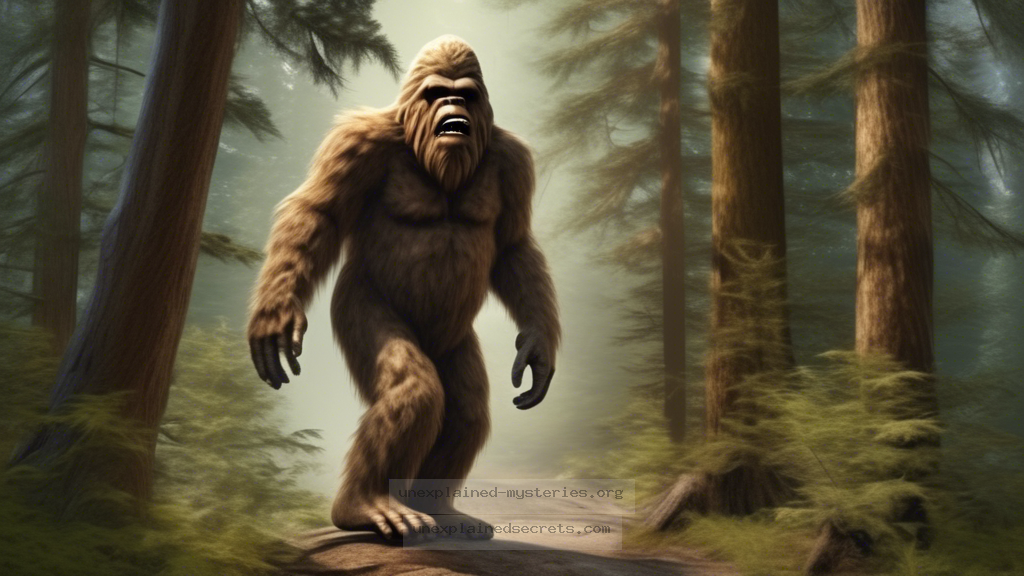What Recent Evidence Suggests Bigfoot Might Actually Exist?
What Recent Evidence Suggests Bigfoot Might Actually Exist?
The mystery of Bigfoot has captivated the imaginations of enthusiasts and skeptics alike for decades. As a creature often described as a large, hairy, bipedal humanoid, Bigfoot has been reported across North America and beyond. Yet, despite numerous claims and sightings, definitive proof of its existence remains elusive. This blog post delves into the recent evidence that has emerged, enhancing the conversation surrounding Bigfoot’s existence and prompting further inquiry into this enigmatic creature.
Historical Context of Bigfoot Sightings
The legend of Bigfoot dates back to indigenous cultures, with various tribes recounting tales of a giant, hairy creature dwelling in the forests. The term “Sasquatch” originated from the Salish word “sásq’ets,” which means “wild man.” The first recorded sighting in the modern era occurred in 1958 when a construction worker in California discovered large footprints near Bluff Creek. This incident spurred a wave of interest and investigation into the creature, leading to numerous sightings and reports.
Throughout the years, Bigfoot has been portrayed in popular culture, ranging from documentaries to movies, fueling public fascination. Yet, amidst the folklore and entertainment, serious researchers have sought to uncover the truth behind these mysterious accounts.
Core Concepts: What constitutes evidence for Bigfoot?
When discussing evidence for Bigfoot, researchers typically categorize it into several types: physical evidence, photographic evidence, and eyewitness testimonies. Each category presents its own challenges and merits.
- Physical Evidence: This includes hair samples, footprints, and other biological materials.
- Photographic Evidence: Images and videos claiming to showcase Bigfoot in its natural habitat.
- Eyewitness Testimonies: Accounts from individuals who assert they have seen Bigfoot.
For evidence to be compelling, it must withstand scrutiny. Scientists often apply rigorous testing to physical samples, while photographs and videos are analyzed for authenticity. Eyewitness accounts, while subjective, can be cross-referenced with other sightings and data for consistency.
Recent Physical Evidence: Hair Samples and Footprints
In recent years, several studies have aimed to analyze hair samples purportedly linked to Bigfoot. One notable case involved a series of hair samples collected in the Pacific Northwest, which were subjected to DNA analysis. The results indicated that the samples did not belong to any known animal, leading some researchers to speculate that they could belong to an undiscovered species.
Footprints are another significant form of physical evidence. In 2020, a team of researchers published a study analyzing footprint casts that were claimed to be from Bigfoot. The study detailed the unique morphology of the footprints, suggesting a bipedal creature with distinct anatomical features unlike any known primate. These findings have reignited the debate over the existence of Bigfoot, offering a scientific perspective on the evidence.
Photographic Evidence: The Patterson-Gimlin Film and Beyond
The Patterson-Gimlin film, shot in 1967, remains one of the most famous pieces of Bigfoot evidence. The film purportedly shows a female Bigfoot walking through the woods. Despite decades of analysis, no conclusive evidence has definitively proven the footage to be a hoax or genuine.
In recent years, new technologies have allowed for enhanced analysis of this film, with experts using software to assess the creature’s movements and physicality. Some researchers argue that the gait and musculature of the creature in the film could not have been produced by a human in a costume, suggesting that the footage is indeed authentic.
Eyewitness Accounts: The Weight of Testimony
Eyewitness testimonies play a crucial role in the Bigfoot narrative. A notable case occurred in 2019 when a group of hikers in Washington state reported a sighting. They described a large, upright figure moving quickly through the trees, leaving them both terrified and fascinated. Such accounts, while anecdotal, provide valuable insight into the ongoing human experience with this elusive creature.
However, the reliability of eyewitness accounts is often debated. Factors such as fear, environmental conditions, and the psychological state of the observer can influence perceptions. Despite these challenges, many researchers advocate for taking eyewitness reports seriously, as they can offer patterns and insights when aggregated.
Alternative Perspectives: Skepticism and Hoaxes
While many are convinced of Bigfoot’s existence, a significant number of skeptics argue that the evidence presented is not sufficient to prove its reality. They often cite the lack of concrete physical remains, like a body or bones, as a critical flaw in the argument for Bigfoot’s existence. Many supposed sightings have been debunked as misidentified animals, hoaxes, or even elaborate pranks.
Additionally, the phenomenon of pareidolia—the human tendency to perceive familiar patterns where none exist—can lead people to misinterpret sounds, shapes, or tracks as evidence of Bigfoot. For instance, a series of howls heard in the wilderness may be attributed to Bigfoot, when in reality, they could be the calls of a known species like a wolf or a bear.
Common Misconceptions about Bigfoot
Despite the extensive folklore surrounding Bigfoot, several misconceptions persist. Here are a few clarifications:
- Bigfoot is a primate: While often classified as such, many researchers argue that Bigfoot may belong to a totally different classification, potentially an undiscovered hominid.
- All sightings are hoaxes: While there are certainly hoaxes, many reports come from credible witnesses across various backgrounds.
- Bigfoot is an aggressive creature: Most reported encounters describe Bigfoot as shy and elusive rather than aggressive.
Notable Fact: The first recorded use of the term “Bigfoot” occurred in 1958, but sightings date back centuries in indigenous folklore.
Best Practices for Investigating Bigfoot
For those interested in investigating the mystery of Bigfoot, there are several best practices to consider:
- Document Everything: Keep thorough records of any sightings, sounds, or physical evidence you encounter.
- Collaborate with Others: Join groups or networks of Bigfoot researchers to share findings and experiences.
- Respect Wildlife: Always prioritize safety and respect for the natural environment during your investigations.
Additionally, utilizing technology such as trail cameras and audio recording devices can enhance your research efforts, capturing evidence that may otherwise go unnoticed.
Future Developments: Ongoing Research and Exploration
The field of cryptozoology continues to evolve, with ongoing research seeking to uncover the truth behind Bigfoot. New technologies, including advanced genetic testing and digital imaging, are being employed to analyze purported evidence. Scientists from various disciplines, including anthropology and wildlife biology, are increasingly engaging in discussions about the possibility of undiscovered species in remote regions.
Furthermore, there is growing interest in the psychological and sociological aspects of Bigfoot sightings. Understanding why people believe in Bigfoot and what these beliefs signify can provide valuable insights into human nature and culture.
Conclusion: The Ongoing Mystery of Bigfoot
The search for Bigfoot is as much a quest for understanding human curiosity and folklore as it is for the creature itself. While recent evidence—be it physical, photographic, or anecdotal—has added layers to the conversation, the question of Bigfoot’s existence remains unanswered. As researchers continue to explore the wilderness, the debate will likely persist, captivating minds and igniting imaginations for generations to come.
Whether Bigfoot turns out to be real or a figment of our collective consciousness, the mystery itself encourages exploration, discussion, and a deeper appreciation for the natural world.
Other Articles
Recent Posts
- What Happened to Flight MH370? The Conspiracy Theories That Still Haunt Us
- What Secrets Lurk Within the Walls of the Infamous Trans-Allegheny Lunatic Asylum?
- What Evidence Supports the Existence of Bigfoot in the Pacific Northwest?
- What Happened to the Indus Valley Civilization? Unraveling the Mysteries of Ancient Urban Life
- Can Telepathy Be Scientifically Proven Through Laboratory Evidence?







